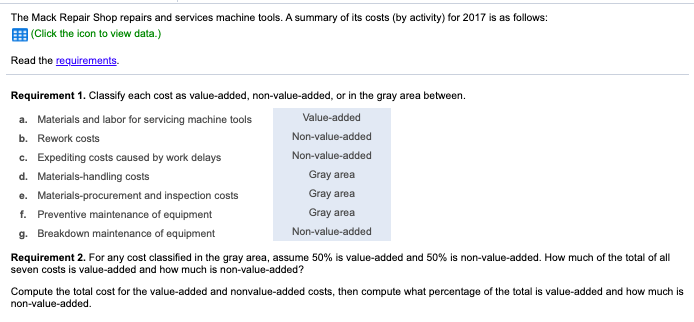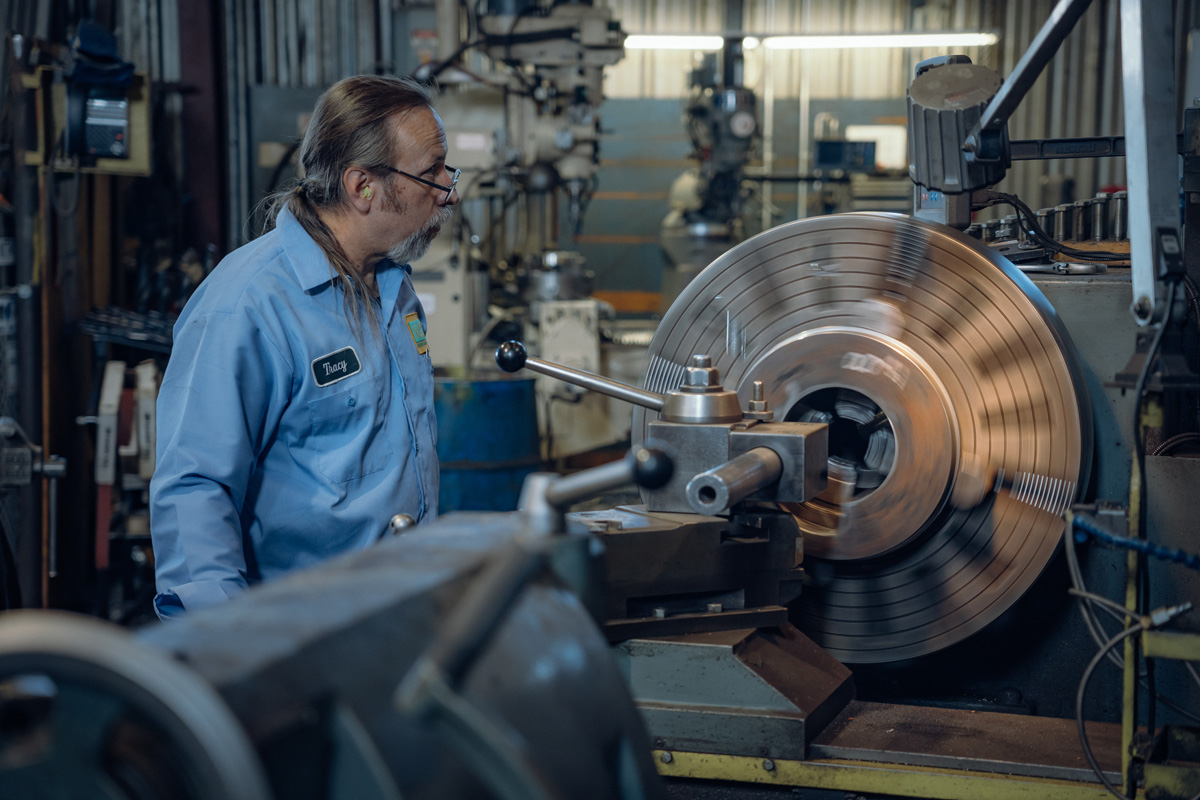The hazards associated with shop areas require special safety considerations. The potential for personal injury is significant whether you work in a wood, metal, glass, vehicle repair, electrical, or other shop. Examples of hazards include: rotating parts, flying chips/particulate, cuts, pinch points and/or exposure to gases or chemicals. It is not possible to note all the potential risks involved with the various shops. However, it is possible to avoid many hazards by carefully planning your work prior to using any equipment or machinery. To prevent accidents, utilize your knowledge, training, and common sense. Know the hazards associated with your work and minimize or eliminate them prior to commencing work.
- Reading Materials (machine Shop)the Mechanics
- Reading Materials (machine Shop)the Mechanic Apprenticeship
- Reading Materials (machine Shop)the Mechanic Tools
- Reading Materials (machine Shop)the Mechanic Jobs
Before working in a shop area, be sure you are properly trained to perform the work to be done. This includes completing the Basic Shop Safety Training as well as any required training specific to the machinery/equipment you will be working on. Inspect your tools and equipment before using them. If a procedure is potentially hazardous to others in the area, alert them accordingly. Notify your supervisor if you notice any unsafe conditions such as: defective tools/equipment or machines that are not properly guarded. Be careful not to distract persons who are working in the shop area. Always remember that machinery/equipment can be dangerous when not used properly. Ensure you are following RIT's Shop Safety guidelines that are posted in shop areas. These guidelines can also be found by clicking the Shop Safety Rules link on the right side of this page.
Among the duties of machinery, the mechanic is keeping industrial machinery fully operational by performing necessary maintenance. They maintain and repair various forms of equipment, including conveyor systems, packaging equipment, production machinery, and so forth. Machinery mechanics typically aren't involved in advanced diagnostics.
- KUNSHAN DESHENGRUI MACHINERY CO.,LTD is one of the leading company specialized in developing, manufacturing and exporting mechanical products.
- 'Laying out' is a shop term which means to scribe lines, circles, centers, and so forth, upon the surface of any material to serve as a guide in shaping the finished workpiece. This laying out procedure is similar to shop drawing but differs from it in one important respect. The lines on a shop drawing in the finished workpiece, For that.
Machine/Equipment Guards
Moving machine parts must be safeguarded to protect operators from serious injury. Belts, gears, shafts, pulleys, fly wheels, blades, chains, chucks, and other moving parts must be guarded if there is a chance they could cause injury. The hazards associated with moving machinery can be deadly. See information about RIT's Machine Guarding program via the link to the right.
Training Requirements
The RIT Environmental Health & Safety Department provides basic Shop Safety Training on-line.
5 years of electrician and or machine mechanic/technician or related experience is required. Also the ability to work in an open work area and in a manufacturing/machine shop environment on a daily basis. Read and understand hazardous material labels Operate all shop powered equipment. Educational facilities include a machine shop and a welding/fabrication lab of over 9,000 sq ft of classrooms, labs, and project layout areas. Machinist and Machine Tool Technology The Madera Community College Center's Manufacturing and Machine Tool Technology program emphasize 'hands-on' instruction.
Also note that everyone needs to take machine/equipment specific training. Instruction in the safe use and care of machines and equipment is essential in preventing injuries in shop areas.
Reading Materials (machine Shop)the Mechanics

Training should include:
- How to safely operate machinery/equipment used in shops;
- The purpose and proper use of machine safeguards;
- Safety procedures: Buddy System, Lockout Tagout;
- Location of emergency equipment and exits; and
Reading Materials (machine Shop)the Mechanic Apprenticeship

- Any shop specific procedures.
Reading Materials (machine Shop)the Mechanic Tools
Retraining is required when a person is assigned to a new machine/piece of equipment or operation; when new or altered safeguards are used; and/or whenever training deficiencies are discovered.
Reading Materials (machine Shop)the Mechanic Jobs
Contact the EH&S Department with any questions at (585) 475-2040.
Researchers in the Mechanical Engineering Department at UCSB are pursuing a wide range of studies in Solid Mechanics, Materials, and Structures - in many areas that are at the forefront of 21st century technologies. There are several unifying inter-related themes that bring clusters of faculty and students together to successfully solve multifaceted problems. Adjprog epson 1390 date.
Research Themes in Solid Mechanics, Materials & Structures

Training should include:
- How to safely operate machinery/equipment used in shops;
- The purpose and proper use of machine safeguards;
- Safety procedures: Buddy System, Lockout Tagout;
- Location of emergency equipment and exits; and
Reading Materials (machine Shop)the Mechanic Apprenticeship
- Any shop specific procedures.
Reading Materials (machine Shop)the Mechanic Tools
Retraining is required when a person is assigned to a new machine/piece of equipment or operation; when new or altered safeguards are used; and/or whenever training deficiencies are discovered.
Reading Materials (machine Shop)the Mechanic Jobs
Contact the EH&S Department with any questions at (585) 475-2040.
Researchers in the Mechanical Engineering Department at UCSB are pursuing a wide range of studies in Solid Mechanics, Materials, and Structures - in many areas that are at the forefront of 21st century technologies. There are several unifying inter-related themes that bring clusters of faculty and students together to successfully solve multifaceted problems. Adjprog epson 1390 date.
Research Themes in Solid Mechanics, Materials & Structures
One such theme is the behavior of new and advanced materials, which include: ceramics, polymers, metallic and intermetallic composites as well as metallic alloys. These new materials pose unique challenges which range from a fundamental characterization of the defect behavior controlling basic flow and fracture processes, to understanding the interactions between the constitutive behavior of various components in composite systems, to describing the evolution of damage induced by microstructural instabilities, complex loading and environmental assault. Success requires combining fundamental knowledge of material behavior with novel mechanics analysis methods.
A second theme pursues solutions found in large-scale computational techniques applied to mechanics and optimization. Again the problems are quite varied, ranging from the development of numerical tools for the optimal design, to the computer simulation of manufacturing processes. Successful solutions rely on combining a fundamental understanding of the mechanics and physics of the problem with the development of novel numerical methods and algorithms and visualization techniques to assess large-scale data outputs, as well as methods to optimize the use of distributed and parallel computers.
Our researchers study a number of fundamental and engineering issues related to the fabrication and performance of materials for advanced thermo-structural systems. Much of this research is centered in the mechanics of materials area. It involves combinations of experiment and modeling to tackle problems related to the use of advanced materials in load bearing applications. The materials include advanced ceramics, composites, films/coatings and cellular materials, as well as interfaces and their adhesion.
The technologies covered are diverse:
- High temperature materials for power generation and aero-propulsion
- Materials for thermal management in hypersonic vehicles, ships and power electronics
- Materials for ultralight components used in aerospace systems
- Materials having especially low weight and compactness through multifunctionality
- Materials and systems for high authority actuation and shape morphing
- Materials and structures that impart blast and fragment protection
Another focus is on developing methods for predicting safe lifetime limits in structural components used in a wide range of engineering systems. These methods are essential for the safe design and operation of new engineering systems as well as lifetime prediction of existing aging systems. The research integrates modeling and experiments to develop a rigorous understanding of microstructural, dimensional and mechanical property changes experienced by materials used in hostile service environments as well as advanced fracture mechanics and statistical reliability assessment methods.
As an integrating theme, the emphasis is not only on 'traditional' materials but also on the application to advanced materials where the effects of environmental degradation are much less understood. Research is also being carried out on smart materials in the form of ferroelectric ceramics. These sensor materials are increasingly being utilized for activation in smart systems to control noise and vibration and the shape of aerodynamic surfaces.

